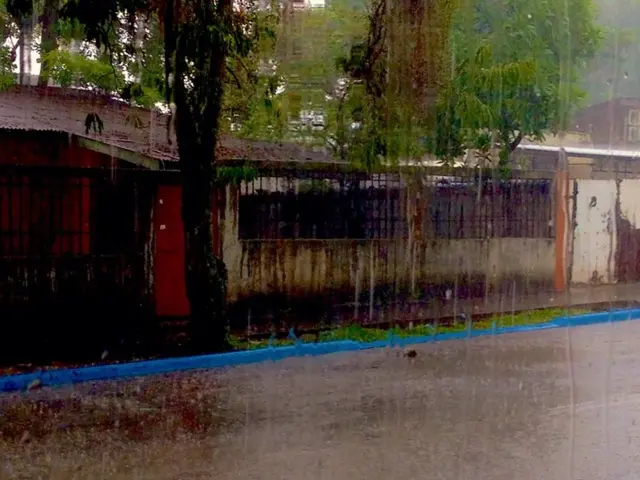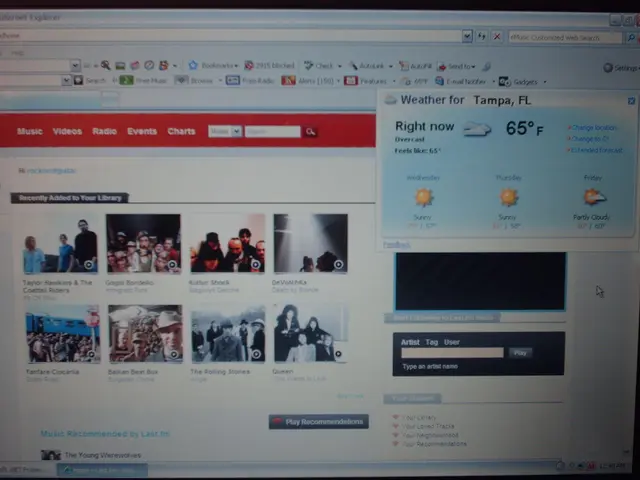Intense heat during the night makes urban living uncomfortable for residents.
Urban Heatwave Hits Southwestern German Cities
The ongoing heatwave in Germany is causing significant concerns, particularly in the urban areas of Southwestern cities. The German Weather Service (DWD) has issued a heat stress warning for these cities, with temperatures expected to soar as high as 36 degrees Celsius along the Rhine and 34 degrees in Stuttgart on Tuesday [1].
The warning remains in effect until Tuesday evening for large parts of Baden-Württemberg, with the heat stress warning extending up to an elevation of 800 meters above sea level [1]. However, the DWD predicts that even after the heatwave subsides, temperatures will still be warm, with summery temperatures around 30 degrees expected towards the weekend [1].
This heatwave is particularly strong in southwestern cities, where the urban heat island (UHI) effect has intensified local temperatures compared to surrounding rural areas. The UHI effect raises urban temperatures beyond baseline atmospheric heat by trapping solar heat in dense infrastructure such as concrete and asphalt, worsened by concentrated human activities and limited green spaces [2][3].
This heatwave is expected to exacerbate health risks, particularly for the elderly and vulnerable individuals. The DWD reports that densely built-up areas cool less at night, and even at night, it will only cool down slightly [1]. City dwellers, particularly in Mannheim, Freiburg, Karlsruhe, and Stuttgart, should brace for the impacts of the heat [1].
Mitigation methods to reduce the UHI effect in Southwestern German cities include enhancing urban greenery and tree canopy cover, implementing cool roofs and cool pavements, improving building and urban design, and water-based cooling solutions [2]. However, the increasing deployment of air conditioning units raises energy demand often met by fossil fuels, worsening emissions, and the AC condensers release heat outdoors, intensifying night-time UHI effects and reducing cooling recovery periods [2].
German adaptation policies emphasize integrated urban planning approaches that combine these technical and green infrastructure solutions to mitigate urban heat impacts comprehensively while balancing energy use and sustainability concerns [1]. The federal and state governments are working together to develop strategies to address the UHI effect and its consequences on public health and energy consumption.
**References:**
[1] DWD (2025). Heatwave warning for Southwestern German cities. Retrieved from www.dwd.de/warnungen
[2] BMBF (2025). Urban heat island mitigation strategies. Retrieved from www.bmbf.de/umwelt
[3] WHO (2025). Heatwave health risks and mitigation strategies. Retrieved from www.who.int/health-topics/heatwave
More environmental science research is required to develop effective strategies for mitigating urban heat islands, such as enhancing urban greenery and improving building designs, in Southwestern German cities like Mannheim, Freiburg, Karlsruhe, and Stuttgart, as the ongoing heatwave is expected to exacerbate health risks. Despite the subsiding heatwave, summery temperatures around 30 degrees are predicted, which may necessitate increased use of air conditioning units, potentially worsening emissions and night-time UHI effects.








